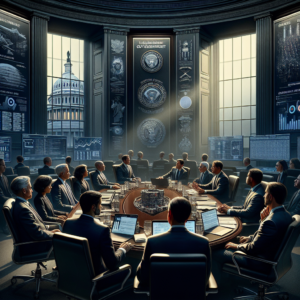Exclusive: Intel CEO Lip-Bu Tan Flattens Leadership Structure, Names New AI Chief
In a significant restructuring move aimed at revitalizing Intel’s focus on artificial intelligence (AI) and enhancing operational efficiency, CEO Lip-Bu Tan has announced changes to the company’s leadership hierarchy. The memo detailing these changes outlines a new strategy that seeks to streamline decision-making processes and emphasize innovation, particularly in the burgeoning AI sector.
The Shift Towards a Flatter Leadership Structure
In the memo circulated to Intel employees, Tan emphasized the need for a more agile organizational structure. He stated that a flatter leadership model would enable quicker decision-making and foster a culture of collaboration across different departments. This shift comes in response to the rapidly evolving tech landscape, where the demand for AI solutions is growing exponentially.
Key objectives of the new leadership structure include:
- Enhanced collaboration: With fewer layers of management, teams can communicate more directly and effectively.
- Faster decision-making: Empowering teams at various levels to make decisions expedites project timelines.
- Increased innovation: A flat structure encourages creative thinking and risk-taking, essential for developing cutting-edge AI technologies.
Tan’s approach is not only about reducing hierarchy but also about reshaping the company’s culture to be more responsive to market changes and consumer needs. By flattening the leadership structure, Intel aims to remain competitive in an industry where speed and adaptability are crucial.
Appointment of a New AI Chief
Alongside the restructuring, Tan has also appointed a new Chief of AI, a role that signifies Intel’s commitment to becoming a leader in AI technologies. This strategic hire is expected to bring extensive experience and a fresh perspective to Intel’s AI initiatives.
Responsibilities of the new AI Chief include:
- Driving AI strategy: Developing and implementing strategies that align with the company’s overall vision for AI.
- Leading AI initiatives: Overseeing projects that leverage AI to improve product offerings and operational efficiencies.
- Building partnerships: Establishing collaborations with other tech companies and research institutions to enhance AI capabilities.
The appointment comes at a crucial time for Intel as it seeks to regain its position as a dominant player in the semiconductor market while also exploring new revenue streams through AI technology. The new AI Chief will play a pivotal role in shaping the company’s future and ensuring that Intel remains at the forefront of this rapidly advancing field.
Implications for Intel’s Future
The restructuring and leadership changes at Intel signal a broader shift in how the company approaches its business model. As AI continues to transform industries, it is imperative for Intel to adapt and respond to these changes proactively.
Potential impacts of this restructuring include:
- Increased market competitiveness: A leaner, more agile organization can respond to market demands more quickly than its competitors.
- Enhanced innovation capacity: Fostering a culture of innovation can lead to breakthroughs in AI technology and applications.
- Attracting top talent: A dynamic and engaging work environment is likely to attract skilled professionals who are eager to work on cutting-edge technologies.
In the tech industry, companies that fail to innovate risk falling behind. Intel’s restructuring is a clear indication that the company is committed to staying relevant in a fast-paced market. By investing in AI and streamlining its operations, Intel aims to not only catch up with competitors but also set new industry standards.
Challenges Ahead
While the restructuring and appointment of a new AI Chief are promising steps, Intel will undoubtedly face several challenges as it navigates this transition.
Some of the potential challenges include:
- Cultural resistance: Changing an established corporate culture can be difficult, and employees may resist the new structure.
- Execution risks: Implementing new strategies and processes involves risks; failure to execute effectively can lead to setbacks.
- Market competition: The tech landscape is highly competitive, and Intel must differentiate itself to succeed against other major players.
Intel must address these challenges head-on to ensure that the restructuring leads to the desired outcomes. Effective communication and support for employees adapting to new roles and processes will be essential for a smooth transition.
Conclusion
Intel’s strategic shift under CEO Lip-Bu Tan is a bold move designed to position the company as a leader in the AI space while enhancing operational efficiency through a flatter leadership structure. The appointment of a new AI Chief underscores the company’s commitment to innovation and responsiveness in a rapidly changing industry.
As Intel embarks on this transformative journey, it will be crucial for the company to remain focused on its objectives, foster a culture of collaboration, and effectively manage the challenges that lie ahead. If successful, these changes could not only revitalize Intel but also redefine its role in the tech industry for years to come.
In a world increasingly driven by technology and data, Intel’s commitment to AI could pave the way for new innovations and maintain its status as a key player in the semiconductor market. The future looks promising for Intel, and all eyes will be on how these changes will unfold in the coming months.



